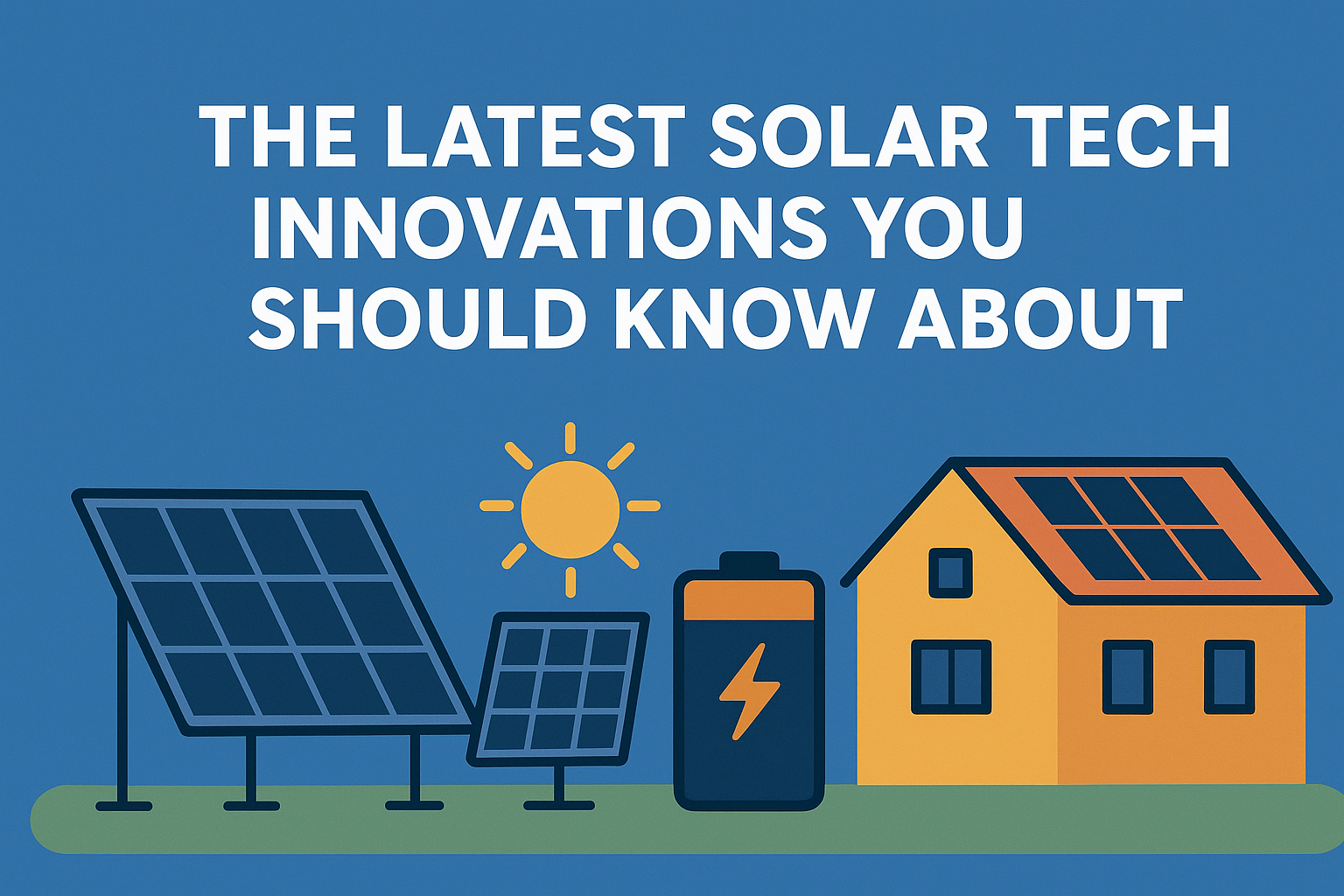The Latest Solar Tech Innovations You Should Know About

The solar energy industry is evolving faster than ever and it’s changing the way we power our homes, businesses, and even our cities. Thanks to groundbreaking innovations, solar power is no longer just about panels on rooftops. It’s about smart energy systems, flexible solar materials, and storage solutions that make renewable energy more efficient, accessible, and sustainable than ever before.
Whether you’re a homeowner looking to cut your electric bills or a business owner aiming to reduce your carbon footprint, here are the latest solar tech innovations you should know about.
High-Efficiency Solar Panels: Doing More with Less
Traditional solar panels are great, but new technologies are making them even better. Modern panels now feature PERC (Passivated Emitter and Rear Cell) and HJT (Heterojunction Technology) designs that boost energy conversion rates significantly.
These innovations mean panels can generate more power even in limited space perfect for rooftops or smaller installations. Some premium models are now reaching efficiencies above 23%, meaning more energy from every ray of sunshine.
In short: You get more electricity without needing more panels.
Solar Roof Tiles: Power Meets Aesthetics
Gone are the days when solar meant bulky panels. With solar roof tiles (also known as solar shingles), your entire roof can now generate electricity while maintaining a sleek and modern appearance.
Brands like Tesla, CertainTeed, and GAF Energy are pioneering this shift, making solar technology blend seamlessly with home architecture. These tiles are built to last, weather-resistant, and perfect for homeowners who want sustainability without sacrificing style.
Learn more : A Step-by-Step Guide to Installing Solar Panels on Your Roof
Perovskite Solar Cells: The Next Big Leap
If there’s one name buzzing in the solar industry right now, it’s perovskite. This material has the potential to revolutionize solar energy with its lightweight, flexible, and ultra-efficient properties.
Researchers are experimenting with perovskite layers that can be printed onto almost any surface from windows to clothing. With efficiency levels rapidly improving, perovskite cells could soon make solar energy cheaper and more adaptable than ever before.
Bifacial Solar Panels: Power from Both Sides
Imagine solar panels that collect energy not only from direct sunlight but also from light reflected off the ground or nearby surfaces. That’s exactly what bifacial solar panels do.
These panels can boost total energy generation by 10–20%, making them ideal for open spaces like solar farms, parking structures, and commercial rooftops. It’s a smart way to get more power from the same footprint.
Floating Solar Farms: Making Use of Water Surfaces
When land is scarce, innovation floats literally. Floating solar farms, also called “floatovoltaics,” are being deployed on lakes, reservoirs, and even irrigation ponds.
These solar farms not only generate clean power but also reduce water evaporation and algae growth. Countries like Japan, China, and the U.S. are leading this movement, and experts predict massive growth in floating solar
Solar Storage Innovations: Power Around the Clock
One of the biggest challenges in solar energy has always been storing excess power for use at night or during cloudy days. Fortunately, next-generation battery storage systems like lithium-iron phosphate (LiFePO4) and solid-state batteries are changing the game.
Modern storage solutions are safer, longer-lasting, and more affordable allowing homes and businesses to enjoy consistent, renewable power 24/7.
Solar-Powered Electric Vehicle (EV) Integration
The fusion of solar and EV technology is one of the most exciting frontiers today. Homes equipped with solar panels can now charge electric vehicles directly from the sun, reducing reliance on the grid and lowering transportation costs.
Companies are even experimenting with solar-integrated car roofs, allowing vehicles to generate supplemental energy while parked or on the go. The future of driving is not just electric it’s solar-powered.
Smart Solar Systems and AI Optimization
Artificial intelligence is stepping into solar energy too. Smart inverters and AI-driven monitoring systems can now track real-time performance, detect inefficiencies, and automatically adjust energy flow for maximum output.
These smart solar setups make energy systems more reliable, efficient, and user-friendly. Imagine getting alerts on your phone about your home’s solar production or automatically selling excess power back to the grid all powered by intelligent tech.
Why These Innovations Matter
All these advancements are pushing solar energy closer to becoming the world’s leading power source. They make solar more affordable, efficient, and adaptable for everyone from households to entire communities.
The transition to renewable energy isn’t just a trend; it’s a movement toward a sustainable future. And these technologies are paving the way.
Final Thoughts
The solar industry isn’t slowing down it’s accelerating into a smarter, cleaner, and more connected future. As technology continues to evolve, so do the opportunities for homeowners and businesses to save money, gain energy independence, and contribute to a greener planet.
Ready to go solar?
Partner with trusted solar professionals who understand the latest technologies and can design a system that fits your needs and budget.
Start your solar journey today and harness the power of tomorrow.